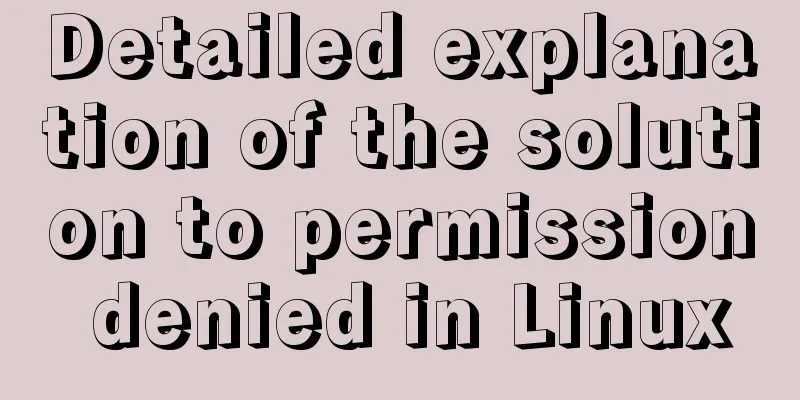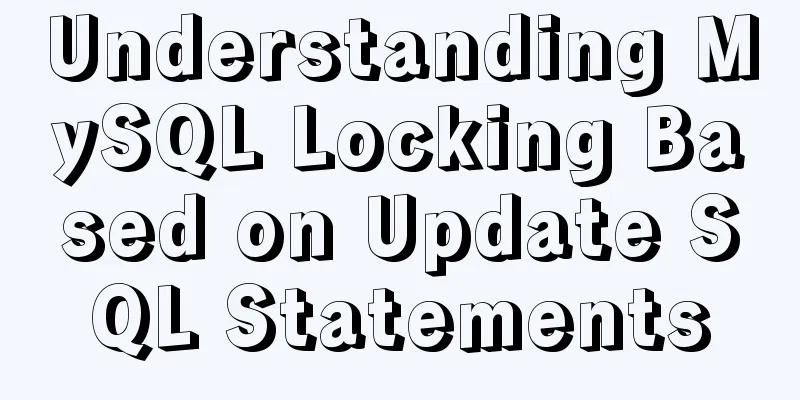Detailed explanation of the solution to permission denied in Linux

|
Permission denied: The reason for this is: there is no permission to read, write, create files, delete files, etc.
Solution: Enter the command For example: sudo: It is a Linux system management command and a tool that allows system administrators to allow ordinary users to execute some or all root commands. -R: refers to the application to all subdirectories and files in the directory; 777: refers to the highest authority that all users have. But it is not convenient and not suitable for novices. The simple and rough method is as follows: Enter in the command line sudo passwd It will prompt you to enter a new password. Re-enter the password, just enter the same as before. After success, enter su root Just enter the password again~
At this point you will find that the $ sign before the command you entered has changed to a # sign, which means you have succeeded.
The following are the additions from other netizenshint
Solution:
in -R means cascading to all subdirectories and files in the directory
Write, read, and execute permissions have the following numeric values:
The permission number for a particular user class is the sum of the permission values for that class. The above is the full content of this article. I hope it will be helpful for everyone’s study. I also hope that everyone will support 123WORDPRESS.COM. You may also be interested in:
|
<<: JavaScript custom plug-in to implement tab switching function
>>: jQuery implements accordion small case
Recommend
Hide div in HTML Hide table TABLE or DIV content css style
I solved a problem tonight that has been botherin...
The pitfall of MySQL numeric type auto-increment
When designing table structures, numeric types ar...
Loading animation implemented with CSS3
Achieve results Implementation Code <h1>123...
MySQL FAQ series: When to use temporary tables
Introduction to temporary tables What is a tempor...
MySQL implements an example method of logging in without a password
Specific method: Step 1: Stop the mysql service /...
Solve the problem of running hello-world after docker installation
Installed Docker V1.13.1 on centos7.3 using yum B...
Using css-loader to implement css module in vue-cli
【Foreword】 Both Vue and React's CSS modular s...
Introduction to query commands for MySQL stored procedures
As shown below: select name from mysql.proc where...
How to solve the problem of not getting form value after submitting html form input using disabled
After the form input box input is set to the disa...
Tutorial on using Multitail command on Linux
MultiTail is a software used to monitor multiple ...
Sample code for a simple seamless scrolling carousel implemented with native Js
There are many loopholes in the simple seamless s...
mysql-8.0.15-winx64 decompression version installation tutorial and three ways to exit
1. Download from the official website and unzip h...
Several principles for website product design reference
The following analysis is about product design pr...
Detailed explanation of setting up DNS server in Linux
1. DNS server concept Communication on the Intern...
MySQL free installation version configuration tutorial
This article shares the MySQL free installation c...












